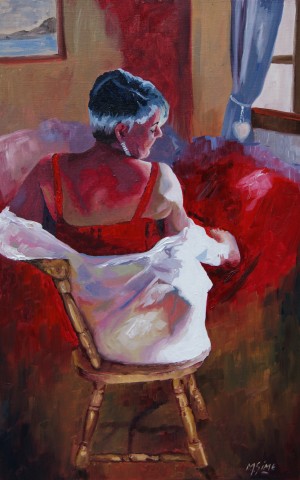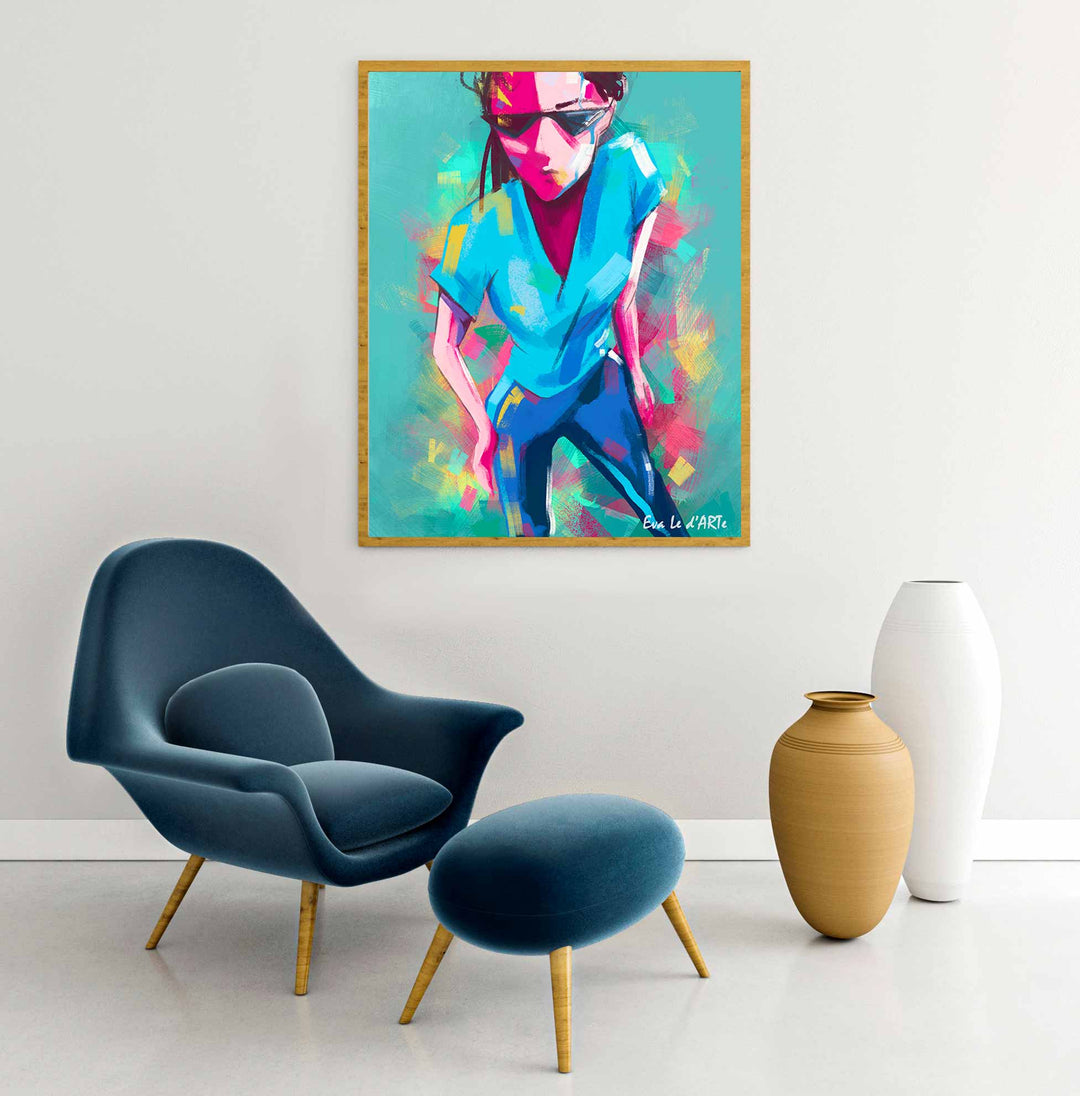The Impact of Figurative Oil Painting on Modern Art and Culture
The Impact of Figurative Oil Painting on Modern Art and Culture
Blog Article
The Development of Figurative Oil Painting: Understanding Its Historic Importance and Modern Interpretations
The development of figurative oil painting offers as a compelling lens with which to examine the interaction in between creative expression and historic context. Contemporary artists, attracting from this abundant heritage, are currently reinterpreting the human number in ways that test traditional stories.
Origins of Metaphorical Oil Paint
The origins of metaphorical oil paint can be traced back to the very early Renaissance in Europe, particularly in the 15th century. This period marked a substantial departure from the inflexible forms and flat depictions characteristic of middle ages art. Musicians began to check out naturalism, stressing the human number and its emotional expression. The growth of oil paint permitted for greater depth of shade and detail, enhancing the realism and vibrancy of their work.

In this transformative period, numbers were commonly illustrated within contextually abundant settings, showcasing not just their physical qualities however also their mental states. Leaders such as Jan van Eyck and Titian used the tool's adaptability, utilizing layering methods to attain brightness and texture. This innovation promoted the representation of elaborate fabrics and the nuances of skin tones, contributing to the development of portraiture and narrative scenes.
Furthermore, the Renaissance focus on humanism promoted a gratitude for individualism, which subsequently influenced musicians to produce even more vibrant and relatable figures - figurative oil painting. Because of this, figurative oil painting emerged as a powerful vehicle for narration and emotional involvement, preparing for future artistic motions and styles
Secret Historical Motions
Significant historical activities have formed the development of metaphorical oil paint, each adding distinct philosophies and methods that increased the medium's opportunities. The Renaissance marked an essential minute, emphasizing realistic look and the human form, with artists like Leonardo da Vinci and Michelangelo pressing the boundaries of anatomical precision and perspective. Following this, the Baroque age brought dramatic contrasts of light and shadow, exemplified by Caravaggio, that instilled religious styles with intense emotionality.
The 19th century presented Romanticism and Realism, where musicians such as Delacroix and Courbet tested classic ideals, concentrating on specific expression and daily life. The introduction of Impressionism further reinvented the tool by highlighting the impacts of light and color, leading to a departure from traditional depiction.
In the very early 20th century, activities like Expressionism and Cubism redefined figurative paint via abstraction and the exploration of emotional depth. Each of these movements not only showed the social adjustments of their times yet also prepared for modern analyses. The interaction in between these historical movements has created a rich tapestry of approaches and designs, influencing modern artists in their pursuit of capturing the human experience on canvas.
Techniques and Materials Evolution

Throughout the Baroque period, strategies such as chiaroscuro and sfumato emerged, enhancing the psychological resonance of metaphorical compositions. Musicians began to explore lusters and impasto, controling appearance and brightness. By the 19th century, innovations like using pre-mixed paints in tubes revolutionized accessibility, enabling musicians to paint en plein air and record the fleeting impacts of light.
The 20th century witnessed the intro of artificial pigments and mediums, which increased the palette and modified the consistency of oil paints. Additionally, the exploration of new application strategies, such as palette knives and brushes of differing rigidity, further varied imaginative expression. Collectively, these innovations reflect the progressing partnership between materials, methods, and the imaginative vision inherent in figurative oil painting.

Contemporary Interpretations
Contemporary analyses of metaphorical oil painting show a vibrant dialogue between tradition and technology, where musicians test established norms and check out varied themes. This advancement manifests in different ways, as modern artists blend classical methods with modern-day ideas, frequently addressing social, political, and individual stories.
Many experts draw motivation from historic works, yet they instill their pieces with modern point of views, utilizing the human type as a car for discourse on gender, society, and identity. Artists progressively experiment with abstraction, distortion, and multimedias, which enables a broader analysis of the number and its context.
Moreover, making use of vibrant color palettes and non-traditional structures usually serves to interrupt conventional watching pop over here experiences, prompting important engagement from audiences. This change in focus extends past aesthetics; it shows an expanding recognition of the complexities of human experience in an interconnected world.
As figurative oil painting continues to progress, it continues to be a crucial medium for discovering the subtleties of contemporary life, symbolizing both a respect for heritage and a commitment to modern idea. The outcome is an abundant tapestry of expression that resonates look what i found with the complexities of the modern-day human problem.
Impact on Modern Art
The effect of metaphorical oil painting on contemporary art is extensive, as it has actually continually motivated a myriad of artistic motions and methods throughout the 20th and 21st centuries. From Expressionism to Surrealism and past, the exploration of the human figure has stayed a central theme, enabling musicians to convey complex emotions and stories. This emphasis on figurative representation has actually brought about a re-examination of conventional strategies, resulting in innovative strategies that blend realism with abstraction.
In addition, contemporary musicians have actually accepted figurative oil paint as a means to deal with social and political concerns, making use of the tool to challenge understandings of gender, identity, and society. The rebirth of rate of interest in figurative work in current years mirrors a wishing for connection in a progressively digital globe, where human experience and emotion are vital.
Additionally, the discussion between metaphorical oil paint and contemporary art appears in the jobs of artists such as Kehinde Wiley and Jenny Saville, who attract on historical recommendations while instilling their items read this post here with modern importance. Inevitably, figurative oil paint remains to shape and redefine modern-day creative expression, underscoring its long-lasting value in the art world.
Final Thought
The evolution of figurative oil paint underscores its historical value and adaptability across numerous artistic activities. From the naturalism of the Renaissance to the emotive expressions of the Baroque and the cutting-edge methods of modernity, this medium has actually continually changed. Contemporary interpretations show dynamic shades and unique structures, cultivating critical engagement with social and political motifs. Inevitably, figurative oil paint remains a crucial medium for exploring the human experience, reverberating greatly in today's digital landscape.
The evolution of figurative oil paint offers as an engaging lens through which to take a look at the interplay between imaginative expression and historical context.Significant historic movements have actually formed the evolution of figurative oil paint, each contributing unique ideologies and methods that broadened the medium's opportunities.As historical motions shaped the trajectory of figurative oil paint, the materials and techniques utilized by musicians have actually additionally undergone considerable transformations. figurative oil painting.The effect of metaphorical oil paint on modern art is extensive, as it has actually constantly motivated a myriad of artistic activities and practices throughout the 20th and 21st centuries.The development of figurative oil paint underscores its historical importance and adaptability across numerous artistic motions
Report this page